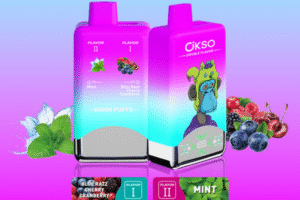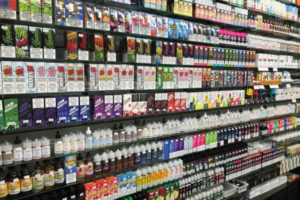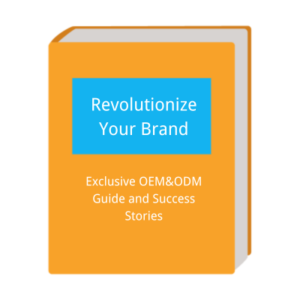Introduction
In recent years, e-cigarettes have grown in popularity as a viable alternative to traditional tobacco products. The market was valued at $20.4 billion in 2021 and is projected to reach $54.1 billion by 2027, growing at a compound annual growth rate (CAGR) of 17.65% from 2022-2027.
As this industry grows, ensuring the safety and quality of e-cigarette products becomes critical. E-cigarette certification plays a vital role in verifying regulatory compliance and protecting consumers. This article will delve into the significance of e-cigarette certification, the different types of certification, the certification process, and the benefits to businesses and consumers.
What is e-cigarette certification?
E-cigarette certification is the process of obtaining official recognition that a product meets specific safety, quality, and regulatory standards. It involves rigorous testing and evaluation of e-cigarettes to ensure they meet established requirements. The primary purpose of certification is to protect the health and safety of consumers while maintaining product quality standards.
Importance of Electronic Cigarette Certification
E-cigarette certification is important to various stakeholders in the industry. First, it ensures that manufacturers and importers follow safety and quality regulations, reducing the risk of substandard or harmful products entering the market. Certification also protects consumers by guaranteeing that the products they buy meet specific standards.
Types of Electronic Cigarette Certification
E-cigarettes usually need several types of certification. One type of certification is the Conformity to European Standards (CE) mark, which indicates compliance with EU safety, health, and environmental requirements. Other certifications include Underwriters Laboratories (UL) certification and U.S. Food and Drug Administration (FDA) registration, depending on the target market.
Electronic Cigarette Certification Process
The process of obtaining e-cigarette certification involves several steps. First, the manufacturer or importer must determine the relevant certification requirements for their target market. Then, they must hire an accredited testing laboratory or certification body to conduct the necessary tests and evaluations. These evaluations include checks on product design, electrical safety, emissions, and chemical composition. The certification body will issue the appropriate certification documents to the manufacturer or importer upon successful completion of the certification process.
Benefits of Electronic Cigarette Certification
E-cigarette certification offers many benefits to both businesses and consumers. For businesses, certification improves market access, as many countries and regions need certification as a prerequisite for product importation and distribution. It also helps companies establish credibility and builds consumer trust by demonstrating their commitment to safety and quality standards. Products that have obtained certification often gain a competitive advantage and attract consumers who focus on product authenticity and compliance. For consumers, e-cigarette certification provides peace of mind about product safety and quality. By certifying a product, manufacturers assure consumers that e-cigarettes have undergone testing and meet established standards, instilling trust in their quality and compliance. The certification helps protect consumers from potential health risks associated with substandard or counterfeit products.
Differences in global e-cigarette certification
Certification requirements for e-cigarettes vary from country to country and region to region. For example, the European Union requires CE marking to show compliance with applicable EU directives, while the United States enforces FDA regulations. Companies must be aware of and follow the specific certification requirements of their target markets.
| Main export markets | Regulatory requirements | Testing and Certification Requirements |
| America | According to the U.S. FDA, for ENDS (Electronic Nicotine Delivery System) components and parts (including e-cigarette oils, glass and plastic containers for e-cigarette oils, cartridges, atomizers, batteries, etc.), a Marketing Authorization Application (PMTA) is required to be filed | FCC, UL-8139, safety features, clinical data, toxicology data, HPHC, etc |
| EU | According to the requirements of the updated TPD (Tobacco Product Directive) Tobacco Products Directive 2014/40/EU issued by the European Union in April 2014, e-cigarettes products need to be notified and publicized 6 months before entering the market for sale, with a nicotine content of less than 20 mg/ml | Smoke testing, CE-EMC, RoHS, REACH SVHC, tobacco oil MSDS, POPs, etc |
| UK | Participation in EU requirements to be notified separately in the MHRA | Smoke testing, CE-EMC, RoHS, REACH SVHC, tobacco oil MSDS, POPs, etc |
| Russia | On July 31, 2020, new amendments to Russia's tobacco control law introduced a new category of "nicotine-containing products" (NCPs), including heated tobacco products, solutions, liquids, and products containing nicotine, which adults are allowed to purchase and use only where sales and smoking are already permitted, with a nicotine content of less than 20mg/ml | EAC compliance certification, RoHS |
| UAE | ECAS registration in accordance with GSO 5030, including 4 ECAS registrations for labeling, oils/liquids, RoHS and e-cigarette devices, with a nicotine content of less than 20mg/ml | RoHS, CB certification for vaping and batteries, GSO ISO 8317 childproof openings, analysis of cigarettes and vape oils for hazardous substances, and more |
| South Korea | According to the requirements of the Korea Tobacco Business Act, when e-cigarettes are used with natural nicotine oils, nicotine content of less than 1% (equivalent to 10mg/ml) is allowed to pass through customs, and an individual excise tax of KRW 370 is levied on each 1 liter of nicotine solution. Nicotine-free cigarette oils are subject to ingredient testing and are taxed according to their composition | Battery KC, Vape KC-EMC, Hazardous Substances in Vape Oil, etc |
| Japan | The sale of nicotine-containing e-cigarettes is not permitted and the market is dominated by heated non-combustible tobacco products | Smoke and battery PSE |
| Australia | The Therapeutic Goods Administration (TGA) of Australia has decided that from October 1, 2021, consumers will need a doctor's prescription to import Australia atomizer nicotine products (vaporizer nicotine products) with a nicotine content of less than 100mg/ml | C-tick certification, analysis of banned substances in tobacco oils |
| Canada | Canada's Tobacco and Electronic Cigarette Products Act (TVPA) and the Canadian Consumer Product Safety Act (CCPSA) require a nicotine content of less than 20mg/ml | IC Certification |
| Indonesia | Nicotine-containing oils are considered to be "other processed tobacco" or products containing "extracts and flavors of tobacco" and were officially declared legal on July 18, 2018, with the decision to impose a 57% tax; e-cigarettes hosts and atomizers (without oils) are considered to be consumer goods. | CE-EMC, RoHS, cigarette oil MSDS |
| Malaysia | According to the Malaysian Organization of Electronic Cigarette Entities (MOVE), Malaysia's long-standing ban on the sale of e-cigarette products is coming to an end. From August 3, 2022 e-cigarettes, whether locally manufactured or imported from abroad, must obtain a product certification from the Malaysian Industrial Research Institute SIRIM | MS2716:2019, MSIEC62133:2017, etc |
Challenges and Considerations
Obtaining e-cigarette certification can present many challenges. These challenges may include navigating the complex regulatory framework, coordinating with accredited testing laboratories, and ensuring ongoing compliance as regulations continue to evolve. To overcome these challenges, companies should stay informed of changing certification requirements, seek professional guidance, and focus on compliance as a core business practice.
Conclusion
E-cigarette certification is vital in ensuring product safety, quality, and compliance. It offers many advantages to companies such as increased market access, improved brand reputation, and increased consumer trust. Consumers can enjoy certified e-cigarettes with product safety and quality assurance. By understanding the importance of e-cigarette certification, companies can navigate the certification process, meet regulatory requirements, and contribute to the improvement of the e-cigarette industry.
At BAE, we offer OEM and ODM services for e-cigarette importers, customized to your specific requirements. We craft our products with the utmost care to ensure that you can have confidence in the quality of your customized e-cigarettes. If you have an interest in learning more about our customized e-cigarette products, contact BAE today.







